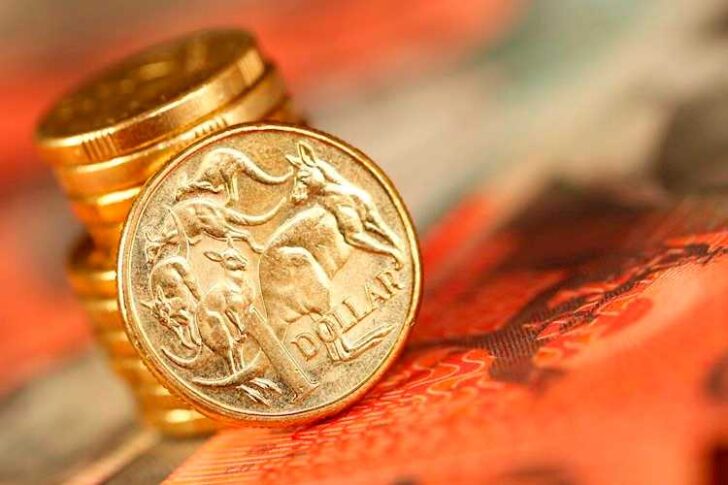- The Australian Dollar rises on hawkish sentiment surrounding the RBA prolonging higher interest rates.
- Australia’s central bank is expected to maintain its current rate at 4.35% until the end of September.
- US Nonfarm Payrolls is expected to print a reading of 243K for April, compared to 303K prior.
The Australian Dollar (AUD) continues its winning streak for the third successive session on Friday. The hawkish sentiment surrounding the Reserve Bank of Australia (RBA) bolsters the strength of the Aussie Dollar, consequently, underpinning the AUD/USD pair.
Australia’s central bank is expected to maintain its key policy rate at 4.35% for a fourth consecutive meeting on Tuesday, and likely until the end of September, as per a Reuters poll of economists. These economists predict only one interest rate cut this year. The higher-than-expected domestic inflation data released last week has raised expectations that the RBA may delay interest rate cuts.
The US Dollar Index (DXY), which gauges the performance of the US Dollar (USD) against six major currencies, remains under pressure following the dovish comments from US Federal Reserve (Fed) Chairman Jerome Powell after Wednesday’s decision to maintain interest rate range of 5.25%-5.50%. Powell’s dismissal of the possibility of another rate hike has contributed to the USD’s weakening.
Market attention has now turned to the US employment data for April, scheduled for later on Friday, which includes Average Hourly Earnings, Nonfarm Payrolls, and ISM Services PMI. These releases are expected to offer additional insights into the condition of the United States (US) economy.
Daily Digest Market Movers: Australian Dollar appreciates due to positive market sentiment
- The Judo Bank Australia Composite Purchasing Managers Index (PMI) declined to 53.0 in April from the previous reading of 53.3. This indicates a slightly slower growth in Australian private sector output. The growth in business activity was mainly confined to the service sector while manufacturing output continued to decrease. Specifically, the Services PMI fell to 53.6 from 54.4 in the previous month.
- The ASX 200 Index saw gains for the second consecutive session on Friday, propelled by positive movements on Wall Street overnight. These gains were driven by reassurances from the US Federal Reserve, which dismissed concerns about another interest rate hike.
- US Initial Jobless Claims data reported that the number of individuals claiming unemployment benefits remained unchanged from the previous week at 208K for the week ending April 26. This figure stays at the lowest level in two months and is notably below market expectations of 212K, potentially providing the Federal Reserve with the flexibility to postpone interest rate cuts.
- US Nonfarm Productivity rose by 0.3% in the first quarter, following an upwardly revised 3.5% increase in the previous quarter and falling short of the expected increase of 0.8%. It was the weakest pace of productivity increase since the January-March quarter in 2023.
- On Thursday, Australia’s Trade Balance (MoM) data posted a surplus, however, it was lower than market expectations for April. Additionally, Building Permits data showed an increase in the number of permits for new construction projects in March, albeit falling short of expectations.
- Federal Reserve Chairman Jerome Powell highlighted that progress on inflation has recently stalled, suggesting that it would take more time than previously anticipated before the Fed could confidently expect inflation to approach its 2% target. Powell mentioned that if robust hiring persisted and inflation remained stagnant, it would justify delaying rate cuts.
- According to the CME FedWatch Tool, the probability of the Federal Reserve keeping interest rates within their current range of 5.25%-5.50% during the June meeting has decreased to 85.8%, down from 90.0% a week ago. Conversely, the likelihood of a 25-basis point rate cut has increased to 14.2% from 9.7% compared to a week ago.
Technical Analysis: Australian Dollar could test the psychological level of 0.6600
The Australian Dollar trades around 0.6570 on Friday. The pair is positioned in a symmetrical triangle pattern, with the 14-day Relative Strength Index (RSI) above the 50-level, indicating a bullish bias.
The AUD/USD pair might test the psychological level of 0.6600, followed by the upper boundary around the level of 0.6630. A breakthrough above this level could lead the pair to explore the region around March’s high of 0.6667.
On the downside, the AUD/USD pair could move toward the nine-day Exponential Moving Average (EMA) at 0.6528, followed by the lower boundary of the symmetrical triangle around the psychological level of 0.6500. A break below the latter could exert pressure on the pair to test the throwback support at the 0.6480 level.


Leave a Reply